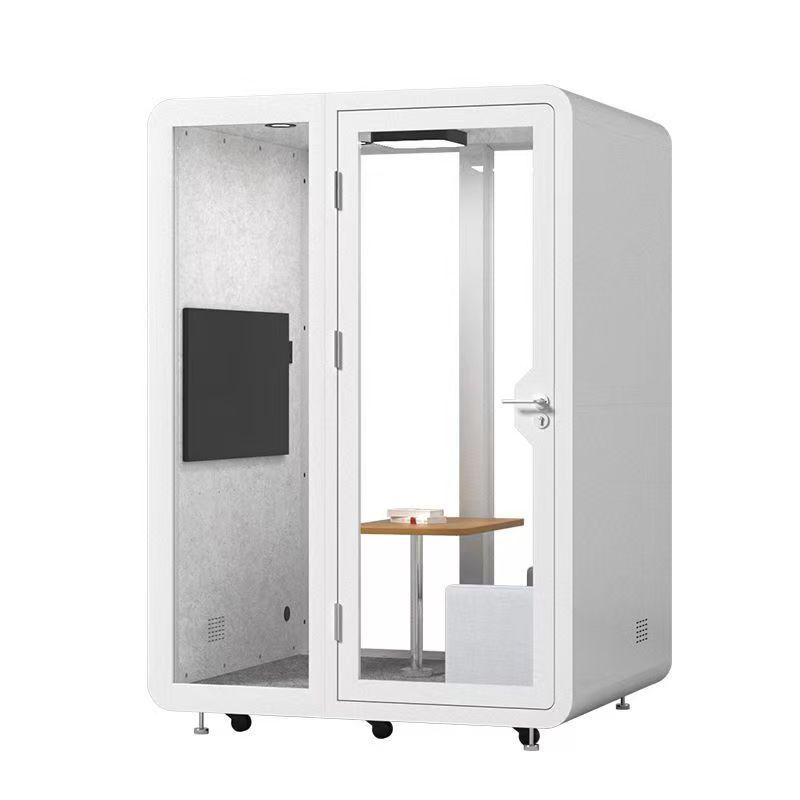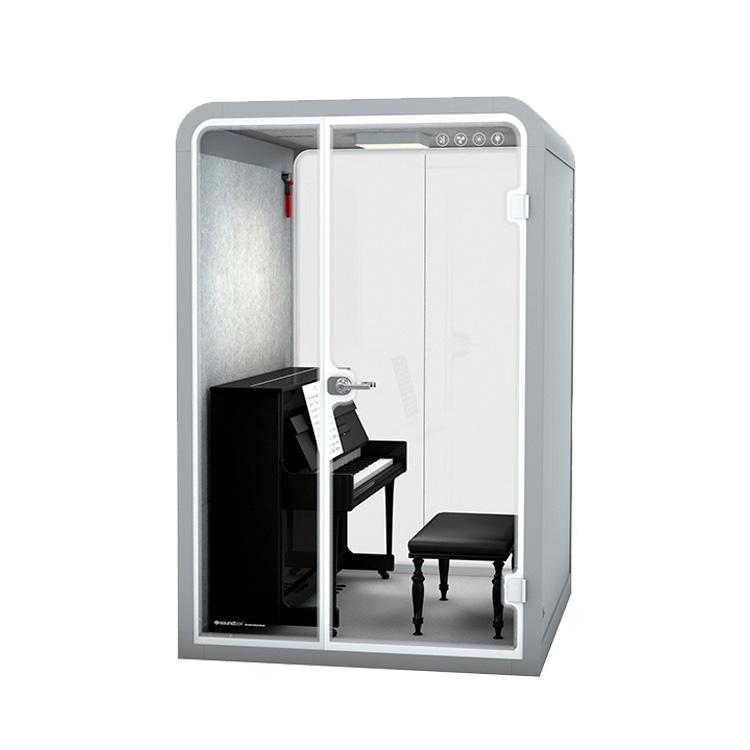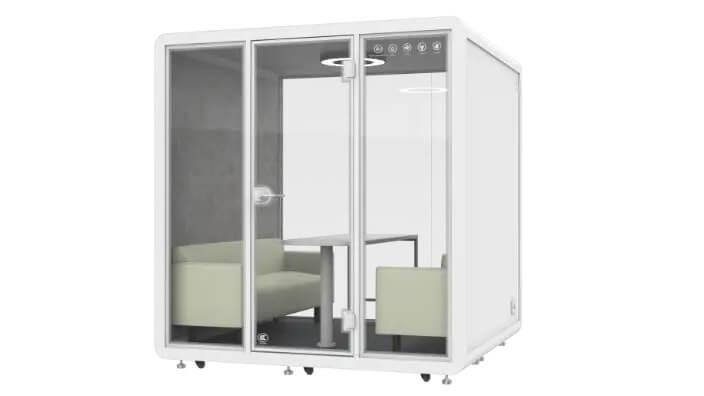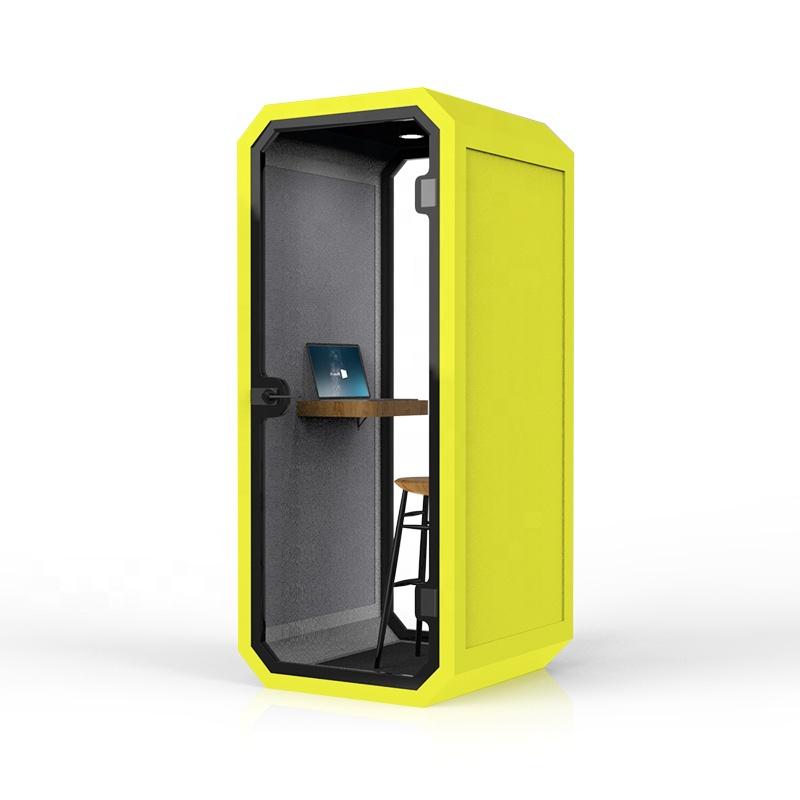Author:SOP Work Pods Manufacturer TIME:2025-02-25
Office booths—sometimes referred to as phone booths, focus pods, or soundproof pods—are small, enclosed spaces designed for individual tasks that require concentration. Whether it’s a phone call, a video conference, or deep-focus work, office booths offer privacy in a shared workspace. As businesses increasingly prioritize employee well-being and productivity, the demand for office booths has grown rapidly.

As environmental consciousness grows, many industries are looking for ways to reduce their carbon footprint. The office furniture industry, including the production of office booths, is no exception. Sustainable materials not only help reduce environmental impact but also contribute to healthier office environments. Manufacturers and businesses are now asking: How can we create functional office booths without compromising the planet’s future?
The materials used in office booth design can greatly influence their overall environmental impact. Let's take a look at some of the most common materials and how they fare in terms of sustainability.

Wood remains a popular material for office booth frames, panels, and finishes. When sourced responsibly from certified sustainable forests, wood can be a very eco-friendly option. FSC (Forest Stewardship Council) certified wood ensures that the wood is harvested in a way that supports forest regeneration and biodiversity. Plywood, made by gluing thin layers of wood together, is another material often used in booth construction. If sourced from sustainable forests, plywood is an eco-conscious choice that reduces waste and promotes responsible land use.
Recycled materials, including plastics, aluminum, and even wood, are increasingly being incorporated into office booth designs. Recycled plastic, for example, can be used for panels, acoustic treatments, and other components. By using recycled materials, manufacturers reduce the need for new raw materials, thereby lowering their carbon footprint and helping reduce waste. Aluminum, which is easily recyclable, is also a popular material for booth frames and finishes, contributing to a sustainable lifecycle.
One of the core features of office booths is soundproofing, and this is achieved through specialized insulation materials. However, not all insulation materials are created equal. Traditional options like fiberglass can have a significant environmental impact due to their production process. Thankfully, more eco-friendly alternatives are emerging. Insulation made from recycled cotton, cellulose, or even hemp offers excellent soundproofing while also being biodegradable and reducing environmental harm.
Upholstery materials for office booths—including fabric-covered seats and acoustic panels—are critical to both aesthetics and comfort. The push for sustainability in this area has led many manufacturers to seek natural, organic, and recycled fabrics. Options like organic cotton, hemp, and wool are gaining popularity due to their low environmental impact. Additionally, some companies are using recycled textiles made from post-consumer waste. Furthermore, non-toxic dyes and water-based finishes are being used to reduce harmful chemical use during production.

While office booths are typically designed to be private, many feature glass or acrylic panels for a modern and open aesthetic. Glass, when sourced and recycled responsibly, is a highly sustainable material. It is durable and can be fully recycled at the end of its life cycle, reducing the need for new raw materials. Acrylic, a lighter and more flexible alternative, can also be recycled but may have a higher environmental footprint compared to glass. To mitigate this, some manufacturers are now using recycled glass or acrylic in their office booth designs.
While sustainable materials are essential, the overall sustainability of office booths depends on more than just the materials used. Factors such as manufacturing processes, product lifespan, and end-of-life management play crucial roles in determining whether an office booth is truly eco-friendly. Many manufacturers now focus on energy-efficient production methods and waste reduction. Additionally, modular office booths—designed to be easily disassembled and repurposed—help extend the product's lifespan, reducing waste and preventing disposal.
The sustainability of office booths goes beyond just the materials—they must also be produced with minimal environmental impact. Companies are increasingly adopting sustainable manufacturing practices, including reducing the use of harmful chemicals, minimizing waste, and optimizing energy consumption. Many manufacturers are also adopting a "circular economy" approach, ensuring that office booths can be disassembled and their components reused or recycled at the end of their lifecycle.

Sustainability isn’t just about the materials; it’s also about the design. Modular and durable office booths that can be easily adapted, updated, or refurbished are a major step toward reducing environmental impact. By designing booths to last, businesses can avoid frequent replacements and the need for new resources. High-quality materials and a focus on longevity ensure that these booths remain functional and efficient for years, reducing overall consumption and waste.
In conclusion, while office booths have become a staple in modern office designs, the materials and production methods used in their construction can significantly impact the environment. By opting for sustainable materials like FSC-certified wood, recycled plastics, and eco-friendly insulation, and by embracing sustainable manufacturing practices, manufacturers and businesses can reduce their ecological footprint. As the demand for eco-friendly products continues to grow, the future of office booths looks promising—both in terms of functionality and sustainability. The key to a truly sustainable future lies in responsible sourcing, ethical production, and a focus on the longevity of these products.